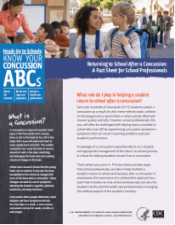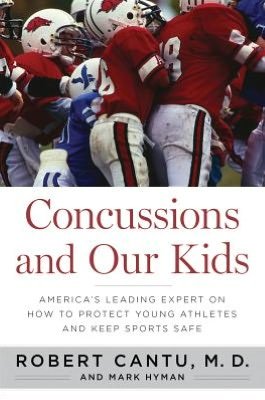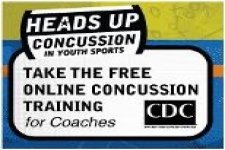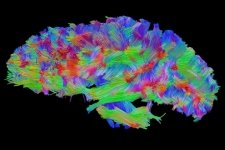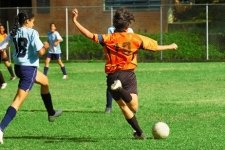Girls' lacrosse; a referee's view
- Created on Sunday, 24 June 2012 23:30
- Last Updated on 16.01.2013
- Published Date
As a new womens' lacrosse referee I initially had mixed feelings about the ongoing debate on the use of helmets in play. Listening to the discussion in referee training sessions that stressed the finesse of the game and the need of the referee to control or slow down play, verses the struggle I felt as a person having a medical degree and realizing the potential hazards of brain injuries, I tried to see both sides.
Some people think that helmets will make the game more physical. But after my first official day as a referee standing on the sidelines watching my daughter’s middle school team begin their game, my beliefs became clear. Female lacrosse players need to wear helmets.

During the first eight minutes of the game there were three injuries, one related to a child’s head and neck. This player had been checked from behind causing her neck to snap back. She then fell and hit her head on the turf. I witnessed every parent’s/referee’s/coach’s nightmare: a player down and seizing.
To my dismay, this player returned to play in less than three weeks and went on to have another concussion and seizure. She is now barred from impact sports for the rest of her life.
What I found out about my local school district surprised me and motivated me to try to educate parents and give people the best information possible. After speaking to the athletic trainers in my school district, I was made aware that high school students are given baseline concussion testing but younger players are not. We are now in the process of offering that testing to younger players. Also, while coaches can have in-person or online concussion training it seems that more could be done to help the coaches and parents become more informed about concussions.
There are numerous issues that could explain the high incidence of concussions in women's lacrosse.
One might be to consider the nutrition and health of girls playing the game today. Both men and women today are better nourished and physically stronger, faster and more powerful than the players of previous years. This has created a weight imbalance as some players can actually outweigh others by a large margin. The physics of combining speed and extra mass can lead to a dangerous combination.
Equipment has also evolved to allow for lighter and faster sticks, causing unintended hits in some instances, I'm sure.
Another factor is the increase in new players due to the popularity of the sport. Putting players of different skill levels in the same game can set up a difficult dynamic. It is important for players to be aware of their body position in space and reference to other players. This is a skill that comes with time and coaching.
Coaching is another aspect of the game that helps teams work together better and control the speed of their game. Neck strengthening exercises can decrease the whiplash motion often caused by a hit to the cranial region.
As for me, I have now completed my first season as a referee. I feel that helmets and proper body equipment in womens' lacrosse will make the game safer for everyone. My feeling is that there are too many factors that increase the potential for head injuries and we should mitigate them as best we can. While I realize helmets do not prevent concussions, I do believe they would be helpful to protect young women from unintended hits to the head.
Dr. Lori McGowan is an Adjunct Professor of Biology at Harrisburg Area Community College in Harrisburg, Pennsylvania.
Brain Health
It is rare for a sports-related concussions to result in a more serious injury such as a skull fracture or hematoma. Nonetheless, it pays to be aware that catastrpohic injuries do sometimes occur as ...
read more...-
CT scans may increase brain cancer risk
Children and young adults scanned multiple times by computed tomography (CT), a commonly used dia...
-
Sub-concussive impacts may affect learning
MINNEAPOLIS – A new study suggests that head impacts experienced during contact sports such as ...
-
Physical activity boosts learning
INDIANAPOLIS – School administrators looking to restructure the academic schedule should consid...




Neuroscience
Athens, Ga.- University of Georgia researchers have developed a map of the human brain that shows great promise as a new guide to the inner workings of the body's most complex and critical organ.
...
read more...-
Does CTE infect neuron to neuron?
NFL Hall of Famer "Iron Mike" Webster's life ended in 2002 when he suffered a heart attack at age...
-
Progesterone seems to protect neurons after injury
It is not yet known why girls suffer concussions at a higher rate than boys. The most prevalent...
-
Amino acids may restore concussion's chemical imbalance
Concussions are often called the "invisible" injury because they are usually not detectable by t...
Resources
- School professionals play an important role in the health of all students. Recognizing the signs and symptoms of concussion is important, as is managing their return to school ...
- CDC's Concussion Training for Clinicians
-
Concussion Education Video Programs - Free and Easy
Parents, athletes, coaches and medical professionals have access to concussion education created...
-
New concussion guidelines for team physicians
INDIANAPOLIS – Team physicians who assess and treat athletes suspected of concussion have new ...
quick links
Latest News
Concussions Occur...
...in Any Sport
REMOVE athlete from play
REFER to medical provider
REST no sports, no texting/TV
RETURN only with doctor's OK
Source: Children's Hospital Boston, Sports Concussion Clinic














